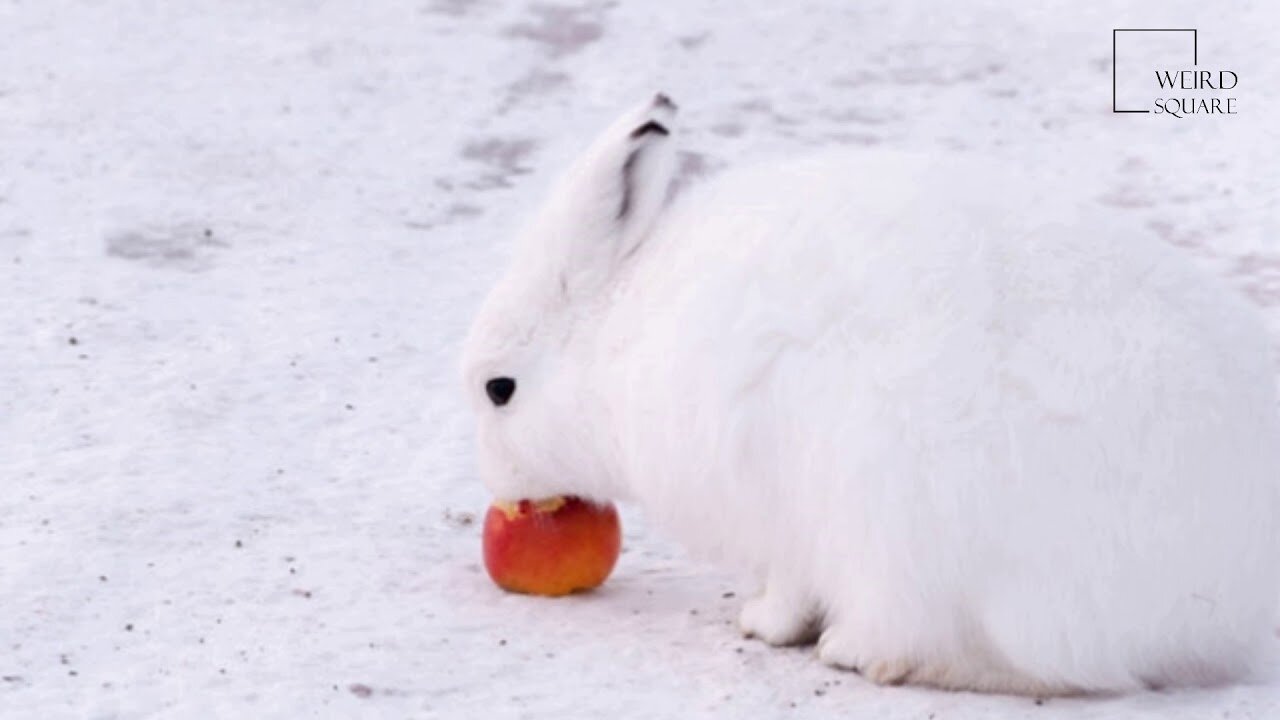Premium Only Content

Interesting facts about Arctic Hare by weird square
Description:
Adapted Fur: Their thick, white fur during winter provides excellent insulation against freezing temperatures, while their brownish-gray fur in summer helps with camouflage.
Large Feet: Sporting large hind feet, they move swiftly over snow and use them for digging burrows in the snow for shelter.
Size and Appearance: They are medium-sized hares, measuring about 19-26 inches (48-66 cm) in length and weighing around 3-12 pounds (1.4-5.4 kg).
Diet: Arctic Hares are primarily herbivores, feeding on woody plants, grasses, and willow twigs.
Behavioral Traits:
Social Behavior: They can be solitary or live in groups called "forms" consisting of several individuals.
Adaptation to Cold: Their small ears reduce heat loss, and they can withstand incredibly low temperatures.
Seasonal Changes: They experience a seasonal change in fur color to match the surroundings, a process called molting.
Adaptation and Survival:
Predator Avoidance: They rely on their incredible speed and agility to escape from predators like Arctic foxes, wolves, and birds of prey.
Breeding Adaptations: Arctic Hares reproduce in the spring and summer, giving birth to litters of up to eight leverets after a gestation period of about 50 days.
Conservation Status:
Stable Population: Arctic Hares are not currently threatened, and their population appears stable.
Ecosystem Importance: They play a crucial role in the Arctic food web as both predator and prey.
Tags:
#ArcticHare #ArcticAnimals #Adaptation #Wildlife #ArcticEcosystem #Nature #Conservation #Herbivores #ArcticSurvival #AnimalFacts
-
 1:29:26
1:29:26
Game On!
14 hours ago $0.42 earnedJon Jones vs Stipe Miocic Heavyweight Title Fight | UFC 309 Preview
1.7K -
 30:26
30:26
The Why Files
7 days agoThe Pascagoula UFO Incident | When Nightmares Come True
27.2K50 -
 1:40:28
1:40:28
Roseanne Barr
1 day ago $50.59 earnedUnredacting Jesus with Billy Phillips | The Roseanne Barr Podcast #74
104K146 -
 55:49
55:49
Stephen Gardner
18 hours ago🔥SECRET TRAPS laid for Trump, RFK & ELON | Megyn Kelly worries for Trump's life, CIA vote algorithm.
15.5K59 -
 1:24:47
1:24:47
Kim Iversen
17 hours agoMafia Tactics: A Private Equity Firm Forced Her Into An Abortion To Retaliate Against Her Speaking Up.
195K227 -
 2:36:29
2:36:29
Fresh and Fit
16 hours agoCall-In Show
184K43 -
 4:08:29
4:08:29
Nerdrotic
19 hours ago $99.31 earnedHollywood in PANIC! Woke Celebrity Meltdown, Penguin Finale CRUSHES! | Friday Night Tights #328
215K46 -
 1:41:22
1:41:22
The Officer Tatum
14 hours agoLIVE: Trump NOMINATES Karoline Leavitt, Whoopi "SMOLLETT" EXPOSED, & MORE | Officer Tatum Show EP 8
91.7K245 -
 30:25
30:25
Glenn Greenwald
16 hours agoGlenn Takes Your Questions Post-Election On The Trump Admin & More
186K112 -
 1:26:23
1:26:23
vivafrei
19 hours agoChinese and Indian INFILTRATION in Canadian Government? Live with David Krayden! Viva Frei Live
258K136